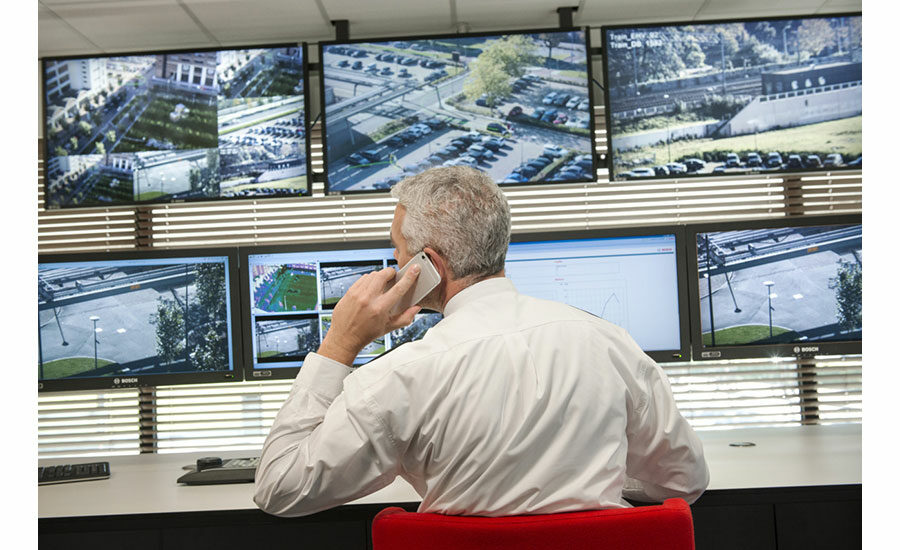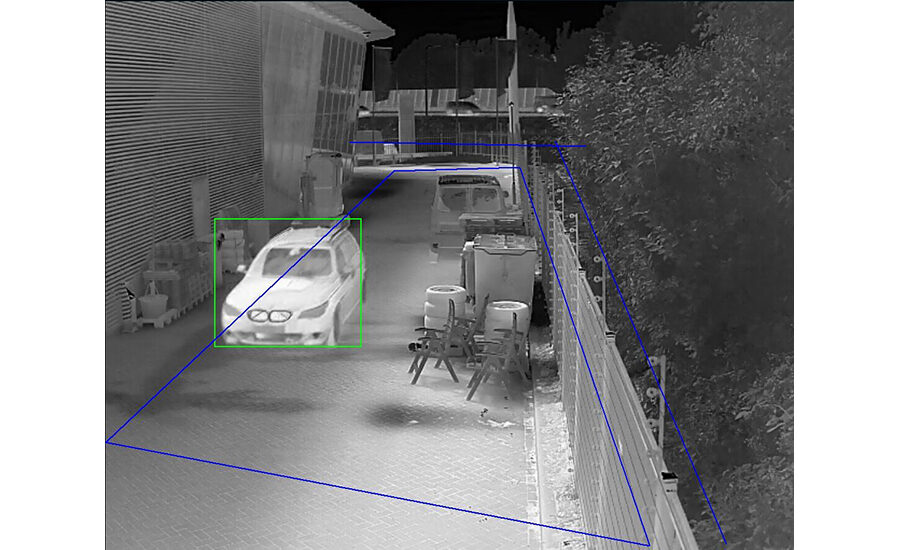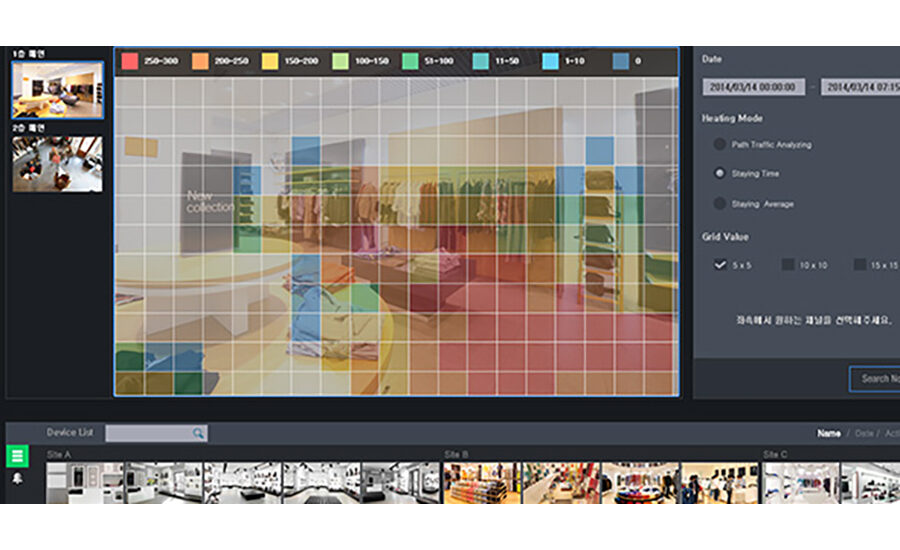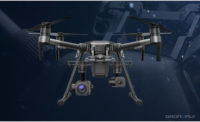We’ve come a long way since the early disappointments in video analytics, and the technology is finally moving out from under the shadow of the days when “over-promise and under-deliver” was the unspoken mantra within the space. While that may no longer be the case, there is still a danger of history repeating itself unless all the facets of the technology are fully understood.
“Video analytics is growing into a hot topic for many customers, yet many of the features touted by manufacturers are often not fully implemented or do not meet customer expectations. This is in part because analytics can be overhyped by the vendor, or the application environment may not be suitable for the desired analytic,” says Jeff Whitney, vice president of marketing, Arecont Vision, Glendale, Calif. “In a very busy area with multiple people, equipment or vehicles moving through the scene, it may not be a successful deployment. Therefore, while video analytics are becoming increasingly important, they remain only part of the solution.”
That said, from security to public safety to crowd management and beyond, video analytics are increasingly being used to reduce risk, enable efficiencies, reduce costs, ensure compliance and provide faster access to stored video. For example, data derived from video analytics can produce actionable intelligence so security can understand and best respond to current situations, says Jonathan Lewit, director of technology leadership, Pelco by Schneider Electric, Clovis, Calif.
“With the increasing amount of intelligence provided with new video analytics, security integrators can offer customers more choices to secure their facilities, processes and procedures, and make security an essential element across enterprise operations,” he says.
Currently Trending
According to Steve Birkmeier, vice president of sales and business development, Arteco, St. Louis, the top trend in the space is for a broader set of analytics moving effectively to the edge and becoming part of the basic feature set of cameras. That may not be terribly new or earth-shattering, but the key word in this case is “effective,” thanks to camera manufacturers.
“It’s really due to the chipsets and other breakthroughs from a development standpoint. They’re finally making analytics a viable option,” he says. “More importantly, it’s making these applications easier to set up and use, which is having direct effects on integrators who are installing them. It also means analytics are actually being used. For a long time, it was this ‘me too’ application that was really used just to check off an RFP when in reality it was a very small part of the market that was using these applications.”
As video analytics grow and mature, the technology is playing a key role in expanding the role of video beyond traditional security and surveillance to more data-driven applications, says Sean Murphy, director of regional marketing – video systems, Bosch Security Systems, Fairport, N.Y.
“Integrators who understand the ability for video to provide business benefits that extend beyond end users’ traditional security needs will have an advantage over their competitors,” he says. “Given this trend, we are challenging ourselves and our customers to rethink video security to get more from video systems than they have in the past. We believe that in the future, video analytics will help users achieve 100 percent utilization of the huge amounts of information contained within the video data collected — using the hidden potential of video to monitor presence to reduce utility bills, identify patterns in customer activity, and much more.”
According to Bret McGowan, senior vice president of sales and marketing, Vicon Industries, Milford, Pa., video analytics seem to have splintered into two separate segments. The first is a basic set of technologies, such as line-crossing, intrusion-detection, tampering and object counting, which were at one point premium analytics but are now included in most higher-end cameras.
The second segment, McGowan says, is high-end analytics. Commonly server-based, these technologies can shoulder multiple analytics and multiple channels simultaneously. For example, companies have recently begun offering post-recording analytic search options that take advantage of the video metadata that is captured to quickly search across multiple channels to track a person, object or event.
“This technology is still in the early stages of development and even though they seem to look impressive, there are still significant limitations in their real-world performance capabilities and they often require an investment in very specific hardware,” he says.
A number of camera manufacturers are also adding deep-learning capabilities to their video analytics. The advanced algorithms behind deep learning allow devices to learn on their own, performing hierarchical data extraction and continually adapting over time even in a complicated environment, says Jennifer Hackenburg, senior product marketing manager, Dahua Technology USA, Irvine, Calif.
“Thanks to this continual adaptation and quicker processing, accuracy of pattern analysis and classification are increased,” she says. “In this way, analyzing video content in real time becomes more efficient and more powerful. Three key features of deep learning are traffic data collection, facial analysis, and heat mapping.”
Because deep learning capabilities involve processing more data, it “learns” to differentiate between humans, vehicles and other factors on a higher level. And the more it is applied, the more robust the analytics become.
“In our process, we spend several months of collecting data for human recognition. The more parts of the world we apply the product to and collect data from, the more we can differentiate between different types of human beings, different clothing, ways they walk and behave,” says Doug Gray, senior product manager, Hikvision USA and Hikvision Canada, City of Industry, Calif. “The more you add to that database, the more it learns. It’s just like reading a book or going to school. You take more classes, you learn more and you grow.”
The Sweetest Spot
Traditional security applications will continue to be the sweet spot for video analytics into the foreseeable future, but broader, non-security applications are quickly growing. And nowhere is this more prevalent than in the retail sector.
“Retailers are using analytics for optimizing their operations, product placement and other functions,” says Brian Carle, director of product strategy, Salient Systems, Austin, Texas. “With a heat map, for example, you can use the information to optimize store layouts to increase sales or even to sell shelf space like in a grocery store.”
True integration between video analytics and point-of-sale (POS) data can provide valuable real-time marketing reports on a number of factors, including conversion rates. This is important for traditional retailers who must compete against their online counterparts, Birkmeier says.
“We’re living in an age when online retailers know so much about their clients’ buying habits and this is a way for the brick-and-mortar stores to take that back a little bit,” he says. “As the analytics get better, the next thing we’ll be looking at are bio trends like gender and age — all these different things that we’re seeing inside of a retail store that, for the most part, online retailers can do.”
These developments are only being accelerated as the lines between brick-and-mortar and online retailers are blurred, as seen with Amazon’s recent acquisition of Whole Foods.
“They’re now going to want to have more data about their customers and how they can combine brick and mortar and online retail applications. To think that a security software application is the gateway into doing things like that is pretty exciting,” Birkmeier describes.
Deep learning can play a key role in helping those in retail and other industries further increase the value of video analytics by helping companies run more efficiently.
“For example, when a retail worker is taking too long to stock a shelf or to retrieve shopping carts, an alert is sent to the manager,” Hackenburg says.
While there may not be an obvious use case for video analytics in some end users’ applications today, security integrators need to educate their customers about the value of the data that solutions can pull from video, Murphy says.
Mirroring previous trends in other technologies, there will likely be a day when video analytics are simply an assumption, rather than an exception, Birkmeier says.
“Security cameras are now seen as very much accepted, and almost required in many areas of our lives. I think we’ll continue to see that with video analytics,” he says. “If something happens and there’s not video analytics in that application, people are going to ask why we didn’t have it there.”
Pearls of Wisdom for Security Integrators
Steve Birkmeier, Arteco: “We like to say to our customers that the further you go into science fiction, there’s diminishing returns ... they’re not a magic wand, and they’re not the be-all, end-all. If an analytics provider is not willing to let you demo the software or show you how to work with it or give you real world answers or applications, then chances are it’s not viable. Know before you buy.”
Brian Carle, Salient Systems: “Understand the different categories of analytics and where to apply them. Edge analytics are for basic needs or to cover a lot of camera positions and enhance information from a camera. Server-based analytics are for those customers who have sophisticated requirements but they add expense. Search-and-investigation applications are for those who need to deploy investigation on a frequent basis or very quickly, and there’s also a cost associated with that.”
Tom Cook, Hanwha Techwin America: “Learn from the manufacturer how to set up analytics properly and understand they will never be 100 percent accurate; the end user needs to fully understand that.”
Doug Gray, Hikvision: “Get products and evaluate them in advance before you implement them. Get comfortable with them and see what they can really do. Ask for test results of the accuracy of products you’re using and inquire with suppliers and vendors as to what you really can expect … from a real-world setup?”
Jennifer Hackenburg, Dahua Technology USA: “Savvy integrators can help security managers understand the potential business data, and help them quantify the estimated potential benefits to the organization.”
Jonathan Lewit, Pelco by Schneider Electric: “(Integrators) need to fully understand how analytics-driven surveillance solutions work and how they can help solve users’ pain points with tangible ROI.”
Bret McGowan, Vicon Industries: “Consider that the settings of most complex analytics require calibration on initial setup and often require ongoing maintenance as a scene changes over time. These analytics are not ‘set and forget’ like standard recording settings.”
Sean Murphy, Bosch Security: “The real power of video is looking at it like a very data-rich sensor. Adding analytics turns that data into the ability to make very well-informed decisions.”
Willem Ryan, Avigilon: “Understanding the goal of your customer and what they are trying to accomplish is fundamental to optimizing your video analytics. For instance, does the customer require live notifications to respond in real time to security events? Or is the system primarily being used for post-event investigation? Is there an operator who is monitoring a site and able to review and verify video footage?”
Jeff Whitney, Arecont Vision: “The most powerful and sophisticated analytics remain those in the VMS or NVR platform, rather than the camera, since they have the most computing power.”
Edge or Headend?
Video analytics can either be performed within the camera at the edge or at the server at the headend location. Which is ultimately the right choice depends entirely on the customer and application.
Camera- or edge-based analytics can reduce bandwidth and storage requirements by performing basic processing before transmitting video.
“There is no need to send all video at a high rate unless the analytic is triggered. So the customer can set up a camera using lower resolution, lower FPS or both until the analytic is triggered and then increase resolution, FPS or both for a time frame,” says Tom Cook, senior vice president sales, North America, Hanwha Techwin America, Ridgefield Park, N.J.
“Because you’re processing raw video before sending it to the server, you’re saving a computing step, which can also save time,” says Brian Carle, Salient Systems.
However, this design also leads to more computing power being required in the camera, which is not directly related to improved image quality, speed or performance.
“This can prove to be a tradeoff between reduced bandwidth demands but less resources allocated for image quality, resolution, reducing motion blur, improving low light performance, and other characteristics of the best professional surveillance cameras,” Whitney says.
Server-based or headend video analytics tend to be more sophisticated and advanced than those performed within a camera. “Server-based analytics may allow the system to perform more advanced or precise analytics algorithms,” Carle says. “You’re also not limited in terms of the platform; you can scale computers to a very large size as necessary.”
In truth, edge and centralized analytics don’t have to be mutually exclusive, and many organizations choose to deploy a mix of both.
“The question of whether to perform analytics at the edge or the headend is no longer an either/ or situation. Technology advancements and cost efficiencies at both the edge and headend provide the opportunity to create powerful hybrid systems that provide the best performance and value to the customer,” says Willem Ryan, vice president, global marketing and communications, Avigilon, Vancouver, B.C.
For More Information about Video Analytics
Visit the following articles:






